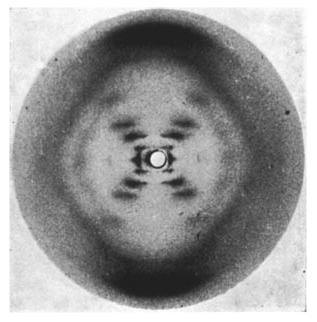Oligonucleotides, often referred to as "oligos,"
are the unsung heroes of the molecular world. In simple terms, they are short
pieces of synthetic DNA or RNA, typically ranging from 20 to 100 nucleotides in
length. While this may sound complex, the world of oligos is actually quite
fascinating and essential for numerous scientific applications.
Origins of Oligos
To understand the significance of oligos, let's take a brief
journey into their origins. The term "molecular biology" was coined
by Warren Weaver of the Rockefeller Foundation in 1938. It marked the beginning
of a scientific adventure that would reveal the intricate dance of genetic
information within RNA and protein structures.
The pivotal moment came in 1953 when Watson and Crick
unveiled the double-helical structure of DNA using X-ray crystallography. This
breakthrough laid the foundation for our understanding of DNA replication and
paved the way for the creation of synthetic nucleic acids like
oligonucleotides.

How Oligos are Made
Today, oligo synthesis is a well-refined process. The gold
standard is the phosphoramidite method, widely used by nucleic acid
synthesizers. This method, initially described in the 1980s, has evolved with
solid-phase technology and automation, making it highly efficient.
Chemical oligo synthesis follows a simple principle:
building in the 3'- to 5'- direction. It starts by covalently attaching a
modified nucleotide to a solid support via its 3' carbon. Building blocks are
chemically modified 2’-deoxynucleosides for DNA synthesis and ribonucleosides
for RNA synthesis.
These nucleosides are carefully attached to the
oligonucleotide in a four-step cycle, involving deblocking, activation,
capping, and oxidation. Once synthesized, the oligo is freed from the solid
support through post-synthesis processing. Purification methods like
polyacrylamide gel electrophoresis (PAGE) and high-performance liquid
chromatography (HPLC) are employed, depending on the oligo's length and
characteristics.

Versatility of Oligos
Despite their simple structure, oligos are incredibly
versatile. They play vital roles in various scientific applications:
PCR Pioneers: Oligos are essential in polymerase chain
reaction (PCR), a groundbreaking technique used for DNA amplification and
cloning.
Gene Expression Monitoring: Oligo probes are used in
quantitative PCR (qPCR) to measure gene expression levels. Reverse
transcriptase (RT) can convert RNA into complementary DNA (cDNA), enabling
precise analysis.
Molecular Beacon Probes: For specific assays, molecular
beacon probes come into play. These dual-labeled oligos emit fluorescence when
they bind to target sequences, making them invaluable in various DNA analyses.
Diagnostics: Oligos are crucial in diagnostics, serving as
sequencing primers for next-generation sequencing (NGS) and probes for DNA
microarrays and fluorescence in situ hybridization (FISH). They help detect
genetic abnormalities associated with diseases like cancer.
Gene Editing: In the field of gene editing, custom guide
RNAs, synthesized oligos, are key components of the revolutionary CRISPR
technology.
In conclusion, while oligos might seem like simple
molecules, they are the backbone of many scientific breakthroughs. At Eurofins
Genomics, we're dedicated to providing high-quality oligonucleotides tailored
to your research needs. From PCR to gene editing, we're here to support your
journey into the world of molecular precision.




Comments
Post a Comment